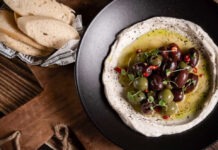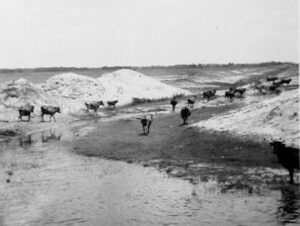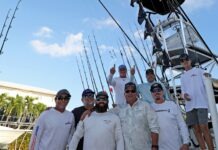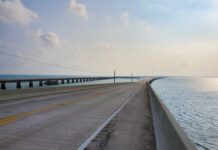
One of our favorite fish to target during the heat of summer is mangrove snapper. The mangrove snapper spawn starts in the beginning of July and ends at the end of August. We like mangrove snapper because they are fun to fight, great to spearfish, school up to chum and are very tasty table fare. Many people agree that mangrove snapper meat is the finest snapper meat – more firm than yellowtail or mutton, and whiter meat than queen, vermillion, lane or schoolmaster snappers.
When mangrove snapper are spawning, they do nothing but feed and breed. The females are thick and juicy and full of roe. The males are fat too, spewing semen and puking chum all over the place when boated.
Avid mangrove snapper anglers in the Florida Keys know the best summer snapper bite has to be at night on a moving tide under a full moon near the end of July and the beginning of August. During that night bite, we like to use bright lights and a lot of chum. We have several different spots on the reef that we anchor up on, but without posting exact numbers, we’ll say that in our opinion, the best spots are deeper than 25 feet and shallower than 65 feet.
The best bait, in order, is small pinfish, small goggle eyes, large razor belly pilchards, large sand key pilchards, large glass minnows, mojarra sand perch, large live shrimp, cut ballyhoo, cut fresh squid and dead peeled shrimp.
The best rig is a Carolina rig, which is a small egg sinker attached to your main line sitting on a swivel with three or four feet of 12- to 17-pound fluorocarbon mono leader with a 1.0 or 2.0 short shaft “J” hook. The next best is a knocker rig, where the small egg sinker slides down the leader and sits on top of the eye of a 1.0 or 2.0 short shaft “J” hook. The next would have to be what’s called a chicken rig. I won’t try to describe it, just google “chicken rig.” The old faithful is your bait hooked to an appropriate sized jig head – a ⅛-ounce jig is the normal go-to size depending on the speed of the current.
The mangrove snapper’s annual migration is as follows:
- Winter: bridges, wrecks and structure, feeding on moving tides.
- Spring: back country, flats and gulf for pre-spawn feeding.
- Summer: coral, limestone and patch reefs for spawning, feeding and breeding.
- Fall: backcountry, flats and gulf for post-spawn feeding.


A few critical notes: Mangrove snapper caught in the Atlantic must measure 12 inches from the tip of the pinched tail to the tip of the bottom lip down the lateral line of the fish. These fish have a bag limit of up to 10 mangrove snappers per angler. Mangrove snapper caught in the Gulf of Mexico must measure 10 inches, measured in the same way. In these waters the bag limit is five mangrove snappers per angler.
My personal best mangrove snapper weighed about five pounds and measured over 25 inches. The IGFA world record mangrove snapper was caught by Tim Champagne from Lafayette, Louisiana. It was caught in a little unincorporated shrimping, crabbing and fishing village called Cocodrie in Terrebonne Parish, Louisiana on Oct. 9, 2015, and weighed in at 18.63 pounds. The length was not listed, but if I had to guess I’d estimate it was over 40 inches.
Some big mangrove snapper have been caught right in our backyard in Marathon. The most popular summer mangrove spawning spot to fish in Marathon is called “the parking lot” about a mile and a half west of the Sombrero lighthouse in 32 feet of water. Most locals know the parking lot. If you go to the parking lot or any other busy reef spot, just remember not to drive through another angler’s chum slick.
Hope to see you all out there!
To book a charter with Ana Banana, call or text Capt. Joel at 813-267-4401 or Capt. Jojo at 305-879-0564, or visit anabananafishing.com.
























